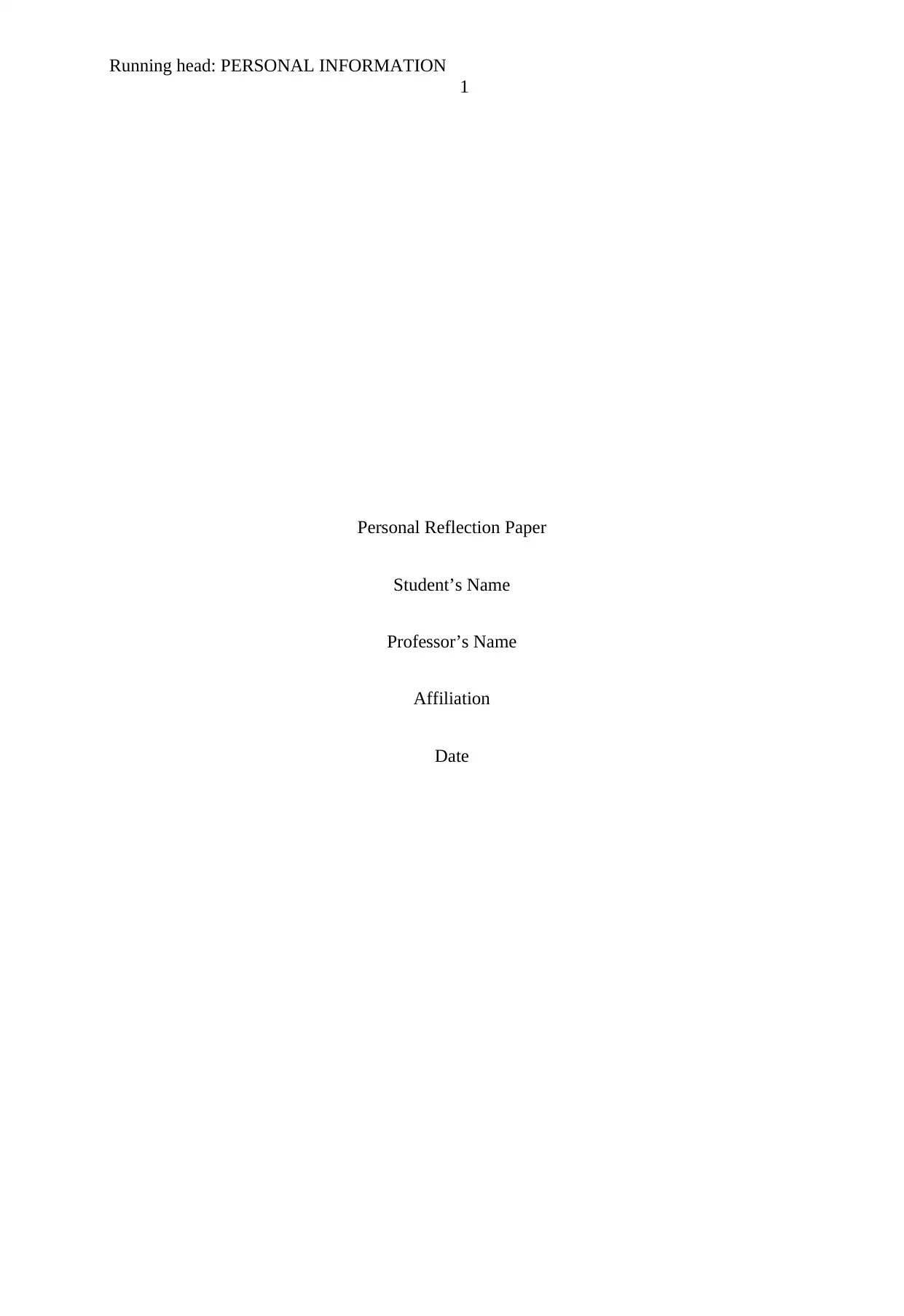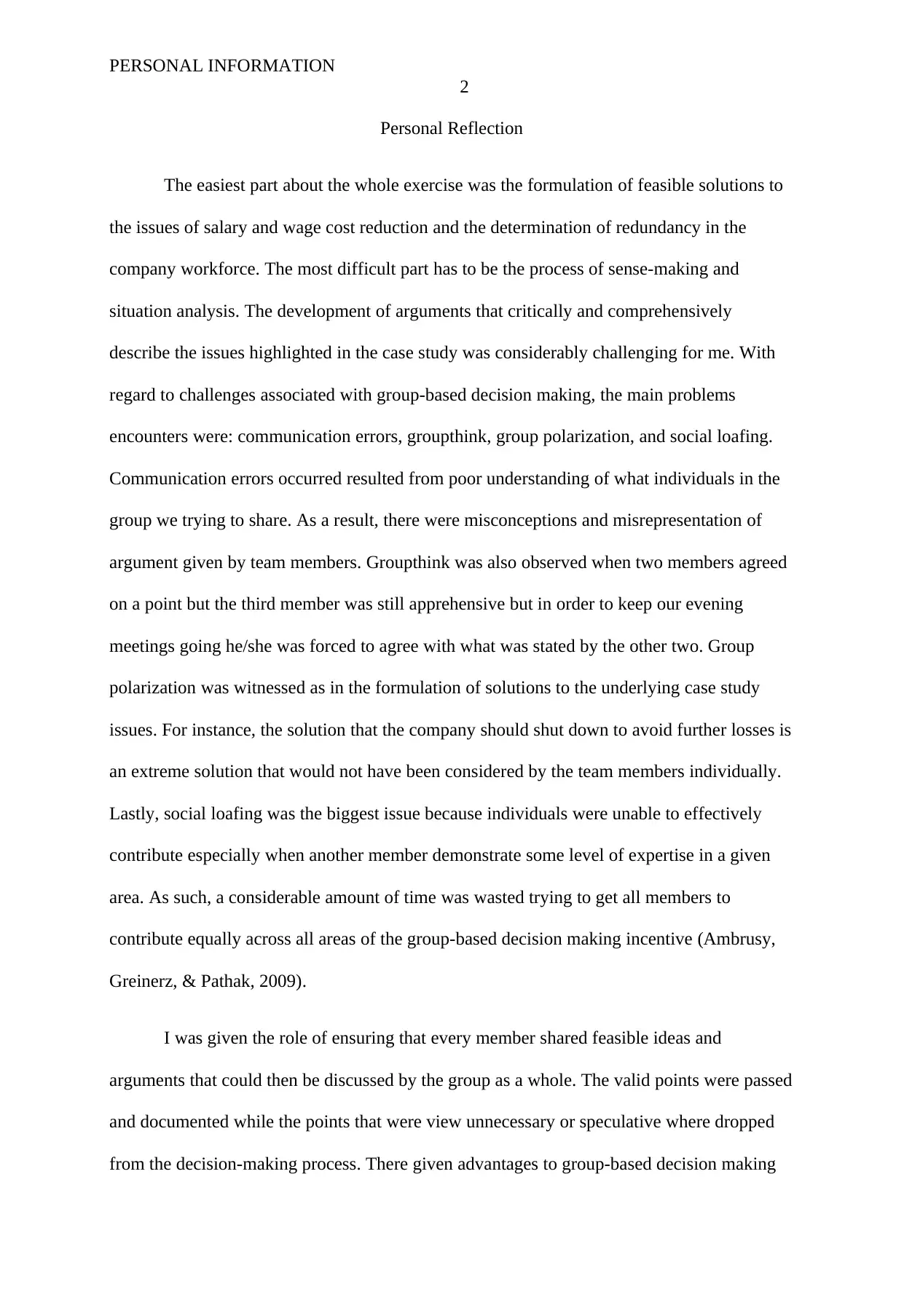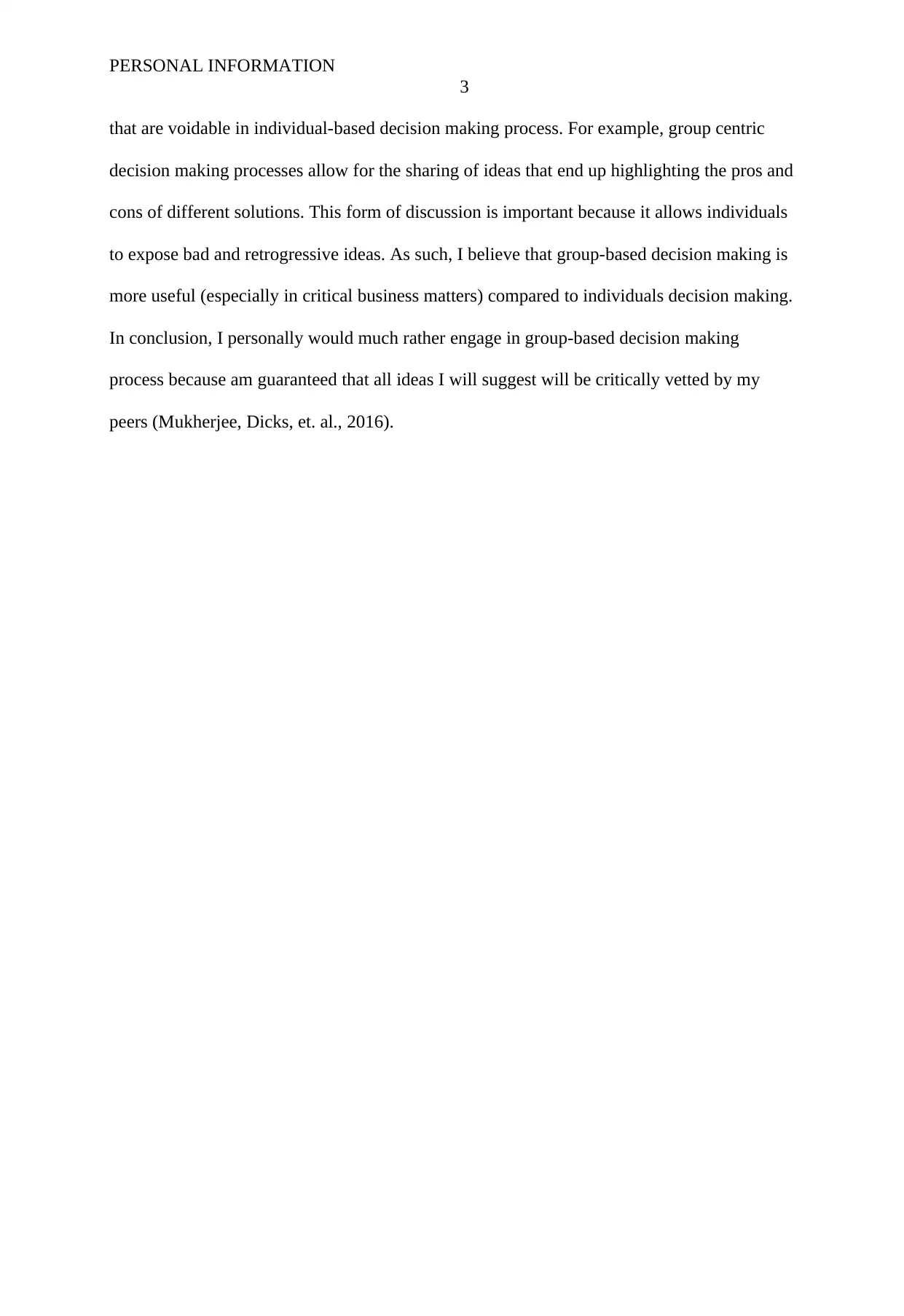MGT602 Business Decision Analytics: A Personal Reflection Essay
VerifiedAdded on 2023/04/23
|4
|574
|489
Essay
AI Summary
This essay provides a personal reflection on the experience of group-based decision making within a business analytics context. It identifies the easiest and most difficult aspects of a related exercise, focusing on sense-making, situation analysis, and the formulation of feasible solutions. The essay highlights challenges encountered during group decision-making, including communication errors, groupthink, group polarization, and social loafing, elaborating on their impact. It also discusses the role of ensuring every member contributes ideas and arguments, and the advantages of group-centric decision-making processes, such as the sharing of ideas and critical vetting by peers. The reflection concludes that group-based decision making is preferred due to the guarantee of critical assessment and the exposure of potential flaws in individual ideas.
1 out of 4











![[object Object]](/_next/static/media/star-bottom.7253800d.svg)